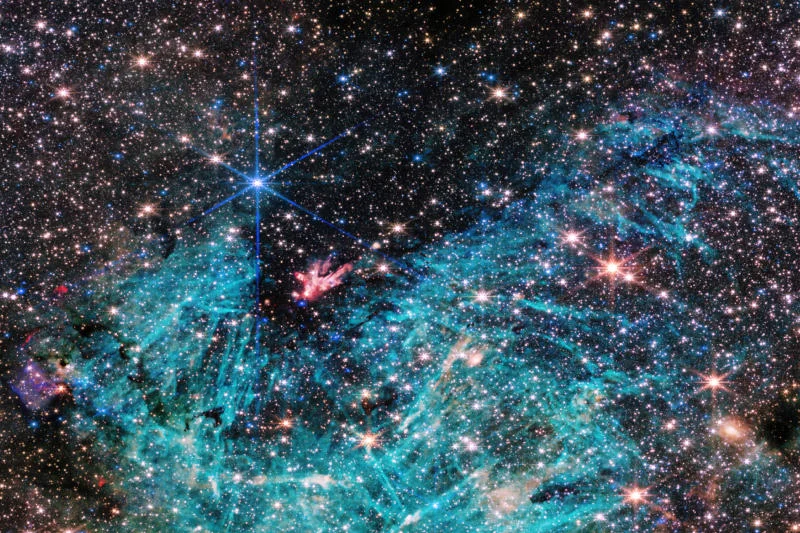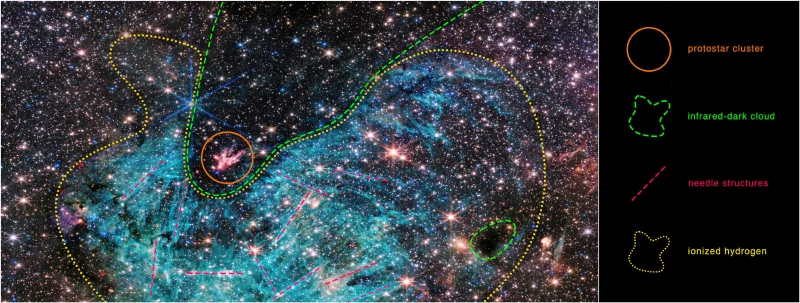The James Webb Space Telescope (JWST) has sent back a strikingly beautiful image of a region from the center of our Milky Way galaxy; The instrument’s instruments captured the Sagittarius C star forming region.
This region is approximately 300 light-years away from Sagittarius A*, the supermassive black hole at the center of our galaxy, and more than 25,000 light-years from Earth. This region contains more than 500,000 stars and several protostar clusters that are still forming and gaining mass. University of Virginia professor Jonathan Tan explained that the center of the galaxy is the “most extreme environment” within it; Until now, astronomers have never imaged this area in such detail and at such resolution.
At the center of this region is a powerful protostar with a mass of about 30 solar masses; it blocks the light behind it, making its surroundings appear less “populated”. The NIRCam camera also captured large-scale ionized hydrogen emission; this is the blue area at the bottom of the image. This effect is probably caused by young and massive stars emitting high-energy photons, but the size of this field came as a surprise to scientists.
Samuel Crowe, head of the research team, explained that studying this and future images will help scientists understand the nature of massive stars, which looks like this: “study of the origin of much of the universe“.














